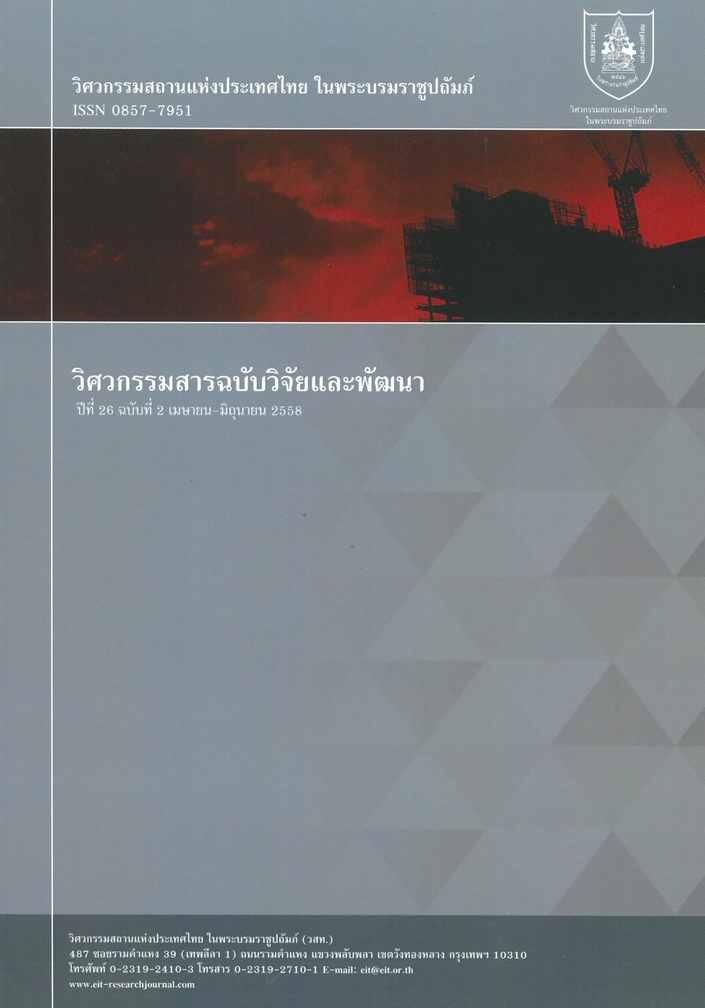EFFECTS OF STRESS PATH ON BIAXIAL STRENGTHS OF SANDSTONES
Main Article Content
Abstract
The effects of stress paths on compressive strengths of sandstones have been studied through the biaxial compression tests. The specimens are prepared from three different sandstones: Phu Phan (PP), Phra Wihan (PW) and Phu Kradung (PK) formations. A true biaxial loading device is developed to test rock specimens under biaxial stress states. The specimens have the nominal sizes of 5.5×5.5×5.5 cm3. Three different stress paths have been implemented under σ3 = 0: path I σ1 increases while σ2 is maintained constant; path II σ1 and σ2 equally increase; and path III σ1 increases while σ2 decreases. For the first stress path, the intermediate principal stress (σ2) is varied from 0 to 70 MPa and for the other two, the mean stress (σm) ranges from 10-45 MPa. The results indicate that different stress paths show different strength results. The intermediate principal stress (σ2) notably decreases the rock strengths. The modified Wiebols and Cook strength criterion can predict the biaxial compressive strengths well. The regression analysis results are 0.95, 0.93 and 0.96 for PP, PW and PK sandstones. These findings are useful to extrapolate the conventional laboratory test results (σ1>σ2, σ3=0) to some actual in-situ condition where σ1≠σ2≠σ3.
Article Details
Section
Research Articles
The published articles are copyright of the Engineering Journal of Research and Development, The Engineering Institute of Thailand Under H.M. The King's Patronage (EIT).


